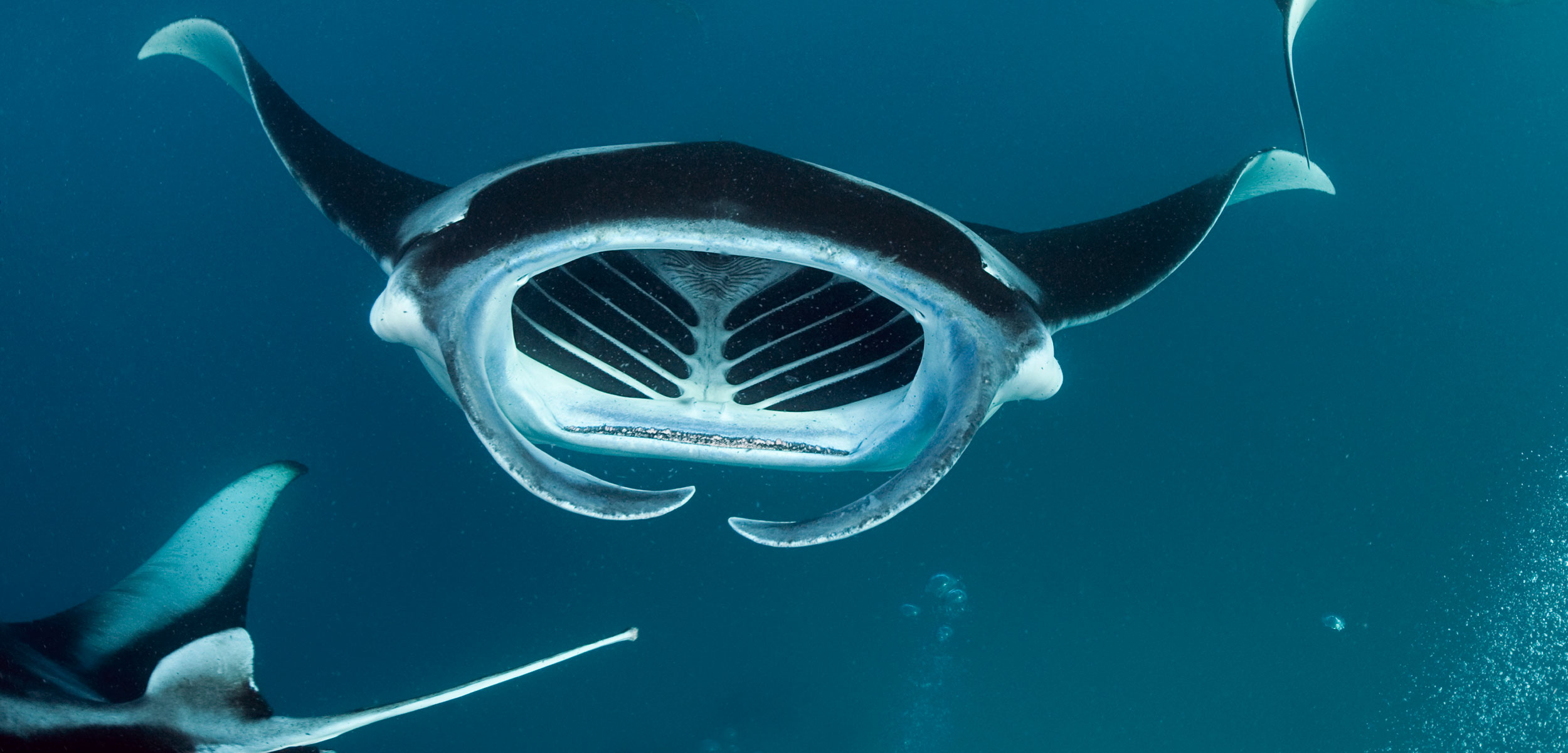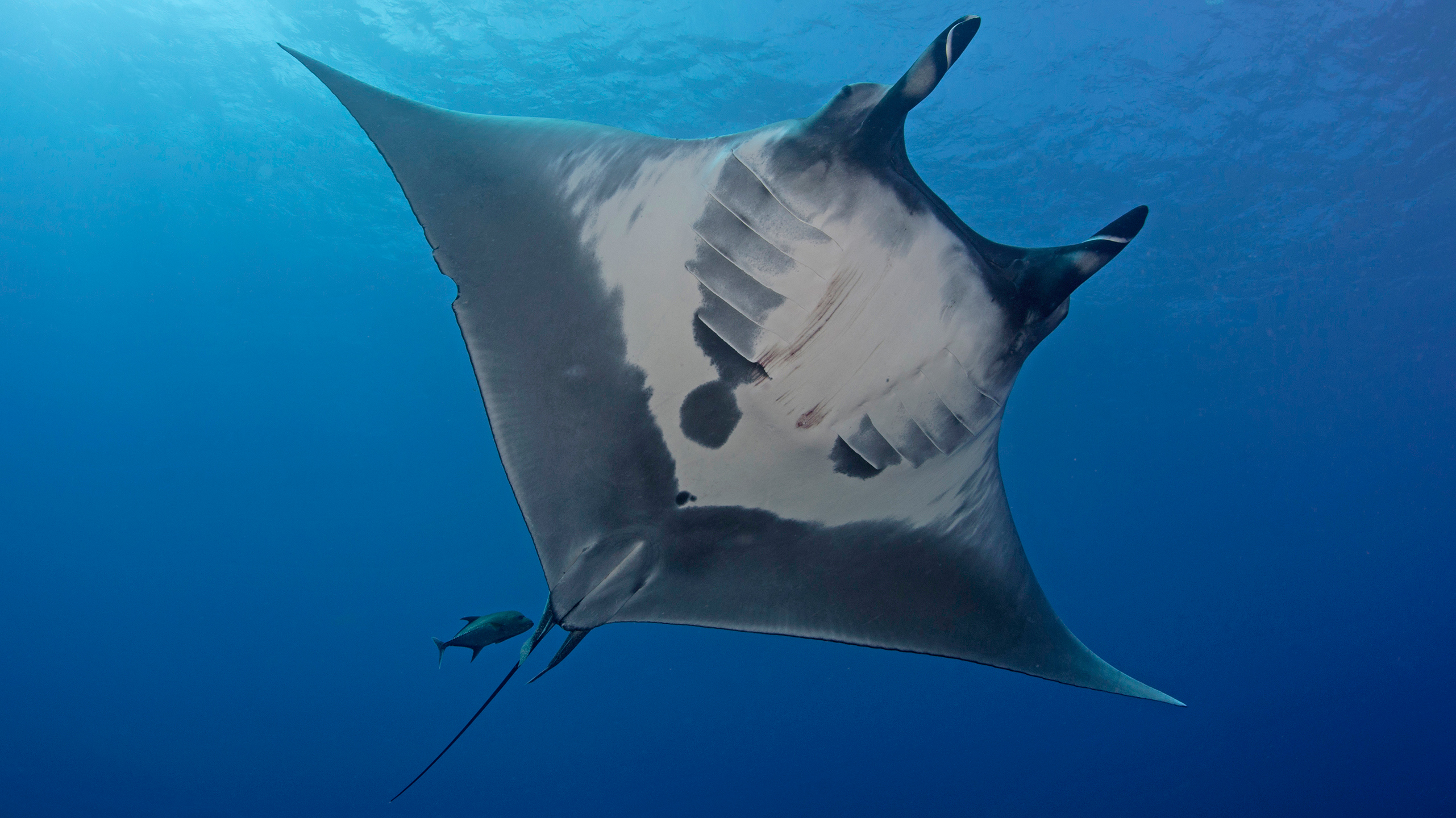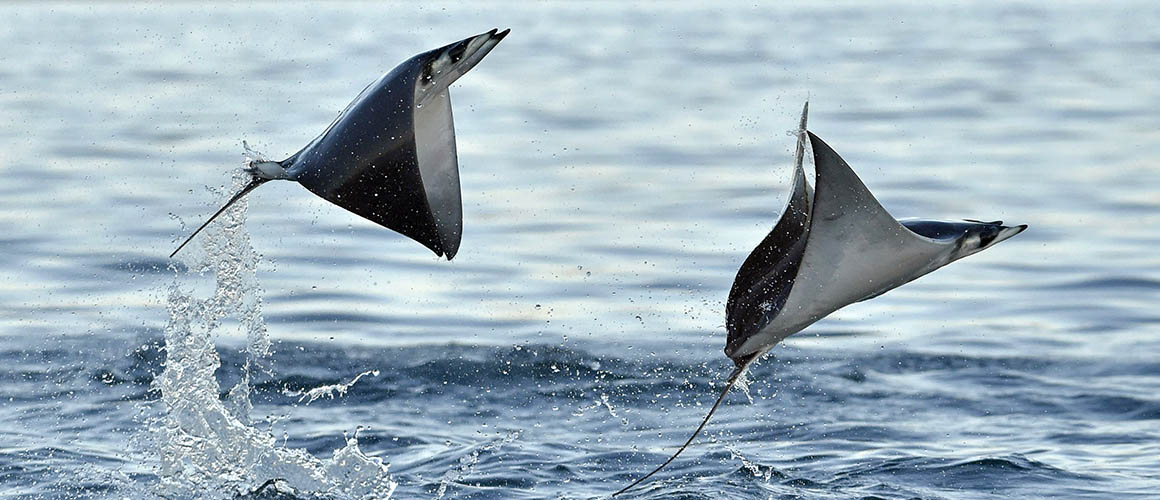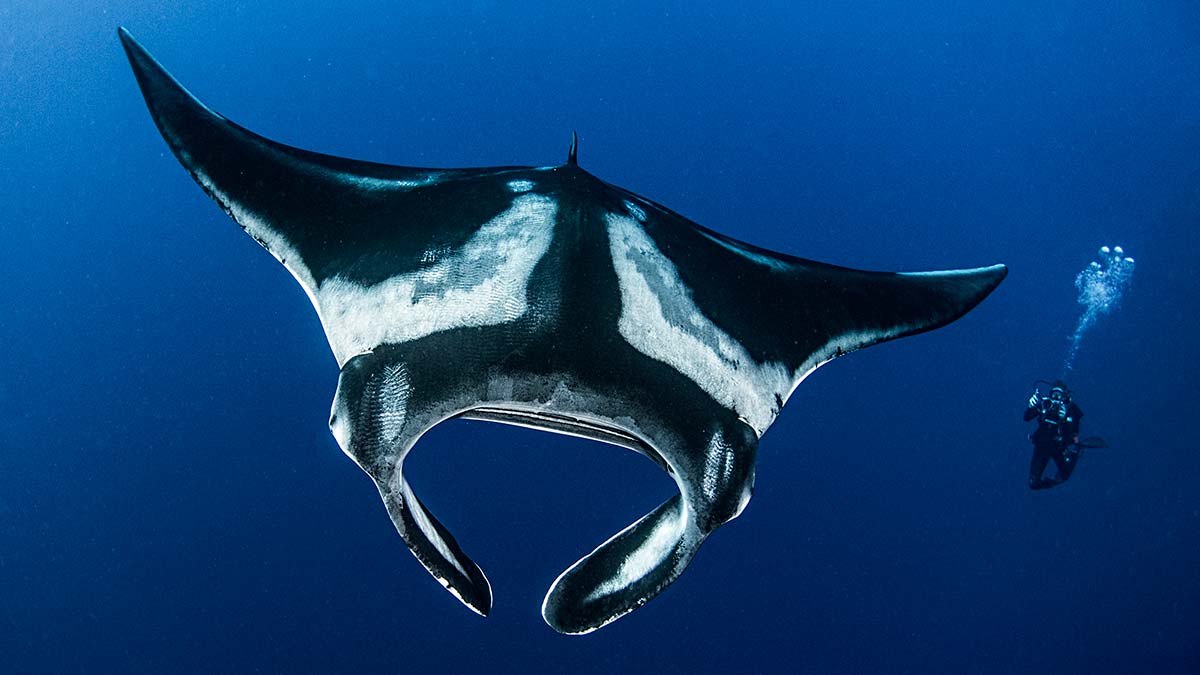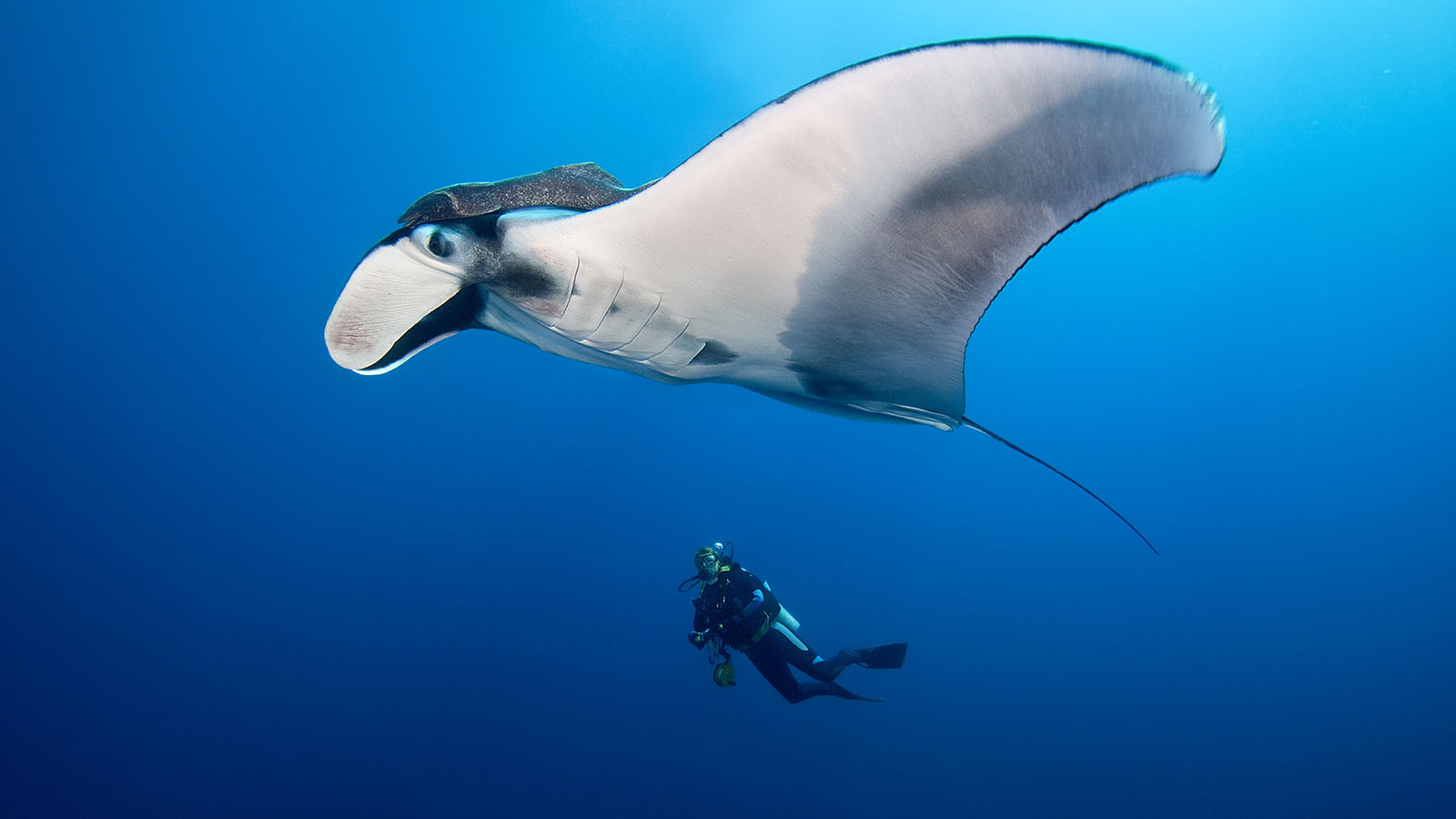STATUS
Critically Endangered

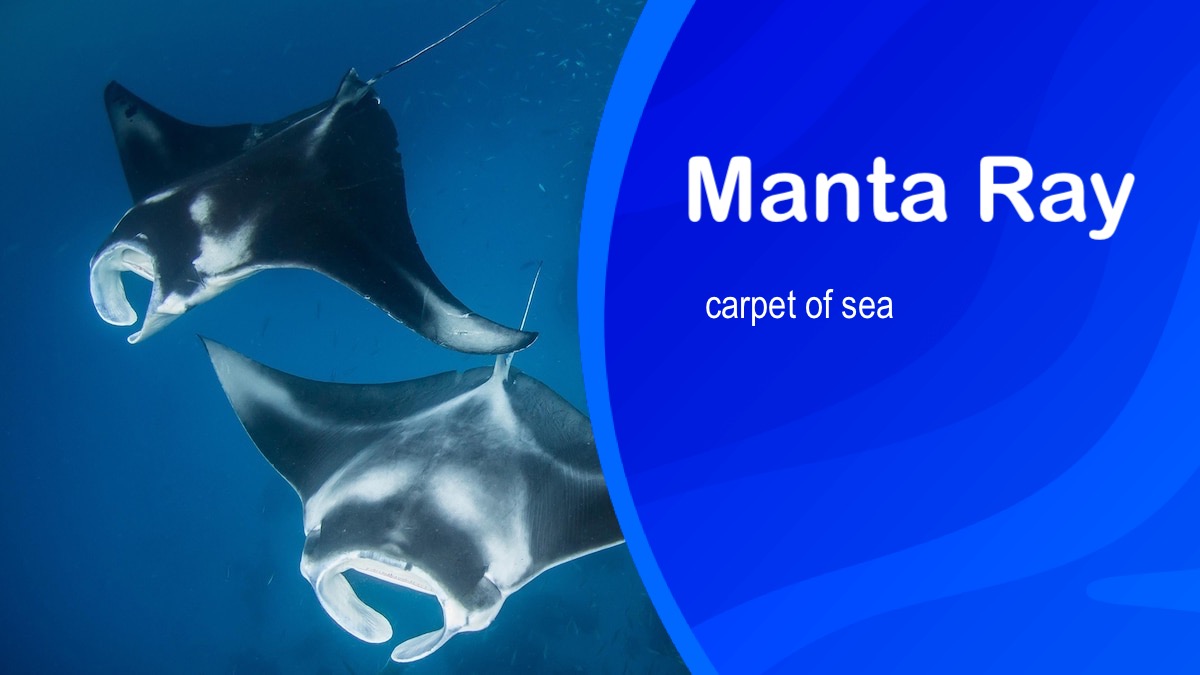
The giant manta ray is the world's largest ray with a wingspan of up to 29 feet. They are filter feeders and eat large quantities of zooplankton. Giant manta rays are slow-growing, migratory animals with small, highly fragmented populations that are sparsely distributed across the world.
Manta rays are recognized by their large diamond-shaped body with elongated wing-like pectoral fins, ventrally-placed gill slits, laterally-placed eyes, and wide, terminal mouths. In front of the mouth, they have two structures called cephalic lobes which extend and help to channel water into the mouth for feeding activities (making them the only vertebrate animals with three paired appendages).
Manta rays come in two distinct color types: chevron (mostly black back and white belly) and black (almost completely black on both sides). They also have distinct spot patterns on their bellies that can be used to identify individuals. There are two species of manta rays: giant manta rays (Manta birostris) and reef manta rays (Manta alfredi). Giant manta rays are generally larger than reef manta rays, have a caudal thorn, and rough skin appearance. They can also be distinguished from reef manta rays by their coloration.

STATUS
Critically Endangered

SCIENTIFIC NAME
Mobula birostris

POPULATION
less than 300-1500 left

LENGTH
7 m (23 ft)

WEIGHT
about 3,000 kg (6,600 lb)

HABITAT
UNDERWATER
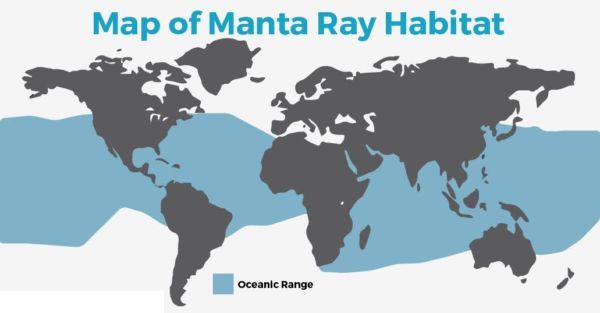
They control plankton abundance and diversity and regulate nutrient cycling. Reef manta rays dive between the surface ocean and the deep sea, creating a valuable ecological connection between the two.
There are two species of manta ray: the reef manta ray, which is found in the coastal waters of the tropics and sub-tropics, and the largest ray in the world, the giant oceanic manta ray, which migrates in the world’s open waters.
Unlike its closest living relative, the shark, manta rays do not actually have teeth and instead sieve plankton out of the water using rows of tiny plates in their mouths, which they funnel in their mouths as they swim.
Manta rays are already threatened by targeted fishing, incidental capture as by-catch and entanglement in marine debris, plastic pollution and habitat degradation. The giant manta ray has become highly valued in international markets for its gill rakers, sponge-like tissue between their gills, which are used in Chinese medicines. Manta rays reproduce slowly and live long, which makes them highly vulnerable to overexploitation.
As for most marine life, plastic pollution poses another major threat to manta rays. Large plastic products clog up the manta's stomach, making it impossible for the animal to digest nutritious food and the animals die. Pieces of plastic < 5mm, pose another serious threat. Microplastics are ingested by sea animals and subsequently block digestive tracts
